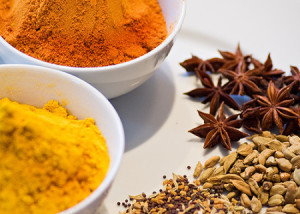Think Twice Before Taking a Non-Steroidal Pain Medication
 The use of both over-the-counter and prescription nonsteroidal medications is frequently recommended in a typical neurosurgical practice for joint pain. But with persistent long-term use there can be significant safety concerns. Non-steroidal anti-inflammatory medications or NSAIDs work to reduce inflammation through a complex metabolic pathway that typically leads to reduction in pain. NSAIDs are approved medications but still under the right circumstances can have serious even deadly side effects. Certain alternative non-medication supplements that also have similar capacity to reduce inflammation in pain.
The use of both over-the-counter and prescription nonsteroidal medications is frequently recommended in a typical neurosurgical practice for joint pain. But with persistent long-term use there can be significant safety concerns. Non-steroidal anti-inflammatory medications or NSAIDs work to reduce inflammation through a complex metabolic pathway that typically leads to reduction in pain. NSAIDs are approved medications but still under the right circumstances can have serious even deadly side effects. Certain alternative non-medication supplements that also have similar capacity to reduce inflammation in pain.
Here is a list of some of the more important and biologically active natural non-steroidal supplements that have been studied and used for decades and even centuries: See Free Online Article – Maroon, JC, Natural anti-inflammatory agents for pain relief, Surg Neuro Dec 2011
Omega-3 Fish Oil
Research has shown that the omega-3 polyunsaturated fatty acids are some of the most effective natural antiinflammatory agents available. With the discovery that vascular inflammation is the underlying
cause of coronary artery disease, fish and fish oil supplements are now recommended by the American Heart Association for the prevention of this condition. Countries that have the highest fish consumption
also have a lower incidence of neurodegenerative disease and depression. The biological basis for the effectiveness of fish oil in treating arthritis has been well documented with many positive clinical studies,
when compared to traditional pharmaceutical antiinflammatory agents.
White Willow Tree Bark
Bark from the white willow tree is one of the oldest herbal remedies for pain and inflammation, dating back to ancient Egyptian, Roman, Greek, and Indian civilizations, as an analgesic and antipyretic agent.
Because of the gastric side effects of aspirin, there has been a resurgence in the use of white willow bark for the treatment of inflammatory syndromes. The mechanism of action of white willow bark is similar to that of aspirin
Various randomized, placebo-controlled studies comparing white willow bark with nonsteroidal agents have shown an efficacy comparable to these agents and aspirin. Salicin from white willow bark is converted to
and is considered to have fewer side effects than aspirin.
Curcumin
Curcumin is a naturally occurring yellow pigment derived from turmeric (Curcuma longa), a flowering plant of the ginger family. It has traditionally been used as a coloring and flavoring spice in food products. Curcumin has long been used in both Ayurvedic and Chinese medicines as an anti-inflammatory agent, a treatment for digestive disorders, and to enhance wound healing. Several clinical trials have demonstrated curcumin’s antioxidant, antiinflammatory, and anti-cancer effects.
Green Tea
Green tea has long been recognized to have cardiovascular and cancer preventative characteristics due to its antioxidant properties. Its use in the treatment of arthritic disease as an anti-inflammatory agent has been
recognized more recently. The constituents of green tea are polyphenolic compounds called catechins, and epigallocatechin-3 galate is the most abundant catechin in green tea.
Pycogenol
Pycnogenol, like white willow bark, is a nutraceutical material that has been used since ancient times. Pycnogenol is derived from the bark of the maritime pine tree (Pinus maritima). It has been considered helpful for wound healing, treating scurvy, healing of ulcers, and reducing vascular inflammation. It contains a potent blend of active polyphenols, which includes catechin, taxifolin,procyanidins, and phenolic acids. It is one of the most potent antioxidant compounds currently known. Pycnogenol inhibits inflammatory activators in white blood cells decreasing the inflammatory response.
Boswellia
The Boswellia species is a trees that produces a gum resin called olibanum, better known in the western world as frankincense. This resin possesses antiinflammatory, anti-arthritic, and has pain relieving properties.
Boswellia can inhibit inflammatory chemicals called leukotrienes. Clinically, the substance is used in the treatment of degenerative and inflammatory joint disorders. It reduces the total white blood cell count
in joint fluid in rheumatoid arthritis.
Resveratrol
Resveratrol is a plant-based polyphenol molecule that is found in various concentrations of many different plant sources. The plant is called Japanese Knot weed or Polygonum cuspidatum, and the skins of red wine grapes
are believe to have the most concentrated amounts of resveratrol. In plants, resveratrol is generally found in the plant skin and acts to protect the plant from infection, excessive UV radiation from the sun and aide in general plant defense. Resveratrol has also been found to have significant anti-cancer, anti-inflammatory, antioxidant and DNA protective actions, when consumed by animals and humans.
Cat’s Claw
Uncaria tomentosa and Uncaria guianensis are Peruvian herbs derived from woody vines with small claw-like thorns at the base of the leaf. Traditionally, the bark of cat’s claw is used to treat arthritis, bursitis, and intestinal disorders. The active ingredients appear to be polyphenols (flavonoids, proanthocyanidins, and tannins), alkaloids, and sterols. Various studies indicate that this Peruvian herb induces a generalized reduction in proinflammatory mediators.
Capsaicin
Capsicum annum is a small spreading shrub and its small red fruit commonly used as a spice due to the chemical capsaicin. Capsaicin constitutes approximately 12% of the chili pepper. This fruit has been used for various medicinal purposes for hundreds of years. Capsaicin inhibits inflammatory markers, thus producing an anti-inflammatory effect. This herb is rarely used alone but is generally mixed into other natural anti-arthritic preparations.




 Dr. Maroon received an athletic scholarship to Indiana University in Bloomington, Indiana where as an undergraduate, he was named a Scholastic All-American in football. Dr. Maroon has successfully maintained his personal athletic interests through participation in 9 marathons and more than 72 Olympic-distance triathlon events. However, his greatest athletic accomplishment is his participation in 8 Ironman triathlons (Hawaii – 1993, 2003, 2008, 2010, 2013; Canada – 1995; New Zealand – 1997; Germany – 2000), where he usually finishes in the top 10 of his age group. Recently, in July 2012 and 2013, he finished second and third, respectively, in his age group in the Muncie, Indiana half Ironman triathlon. In October 2013 he completed his 5th World Championship Ironman in Kona, Hawaii.
Dr. Maroon received an athletic scholarship to Indiana University in Bloomington, Indiana where as an undergraduate, he was named a Scholastic All-American in football. Dr. Maroon has successfully maintained his personal athletic interests through participation in 9 marathons and more than 72 Olympic-distance triathlon events. However, his greatest athletic accomplishment is his participation in 8 Ironman triathlons (Hawaii – 1993, 2003, 2008, 2010, 2013; Canada – 1995; New Zealand – 1997; Germany – 2000), where he usually finishes in the top 10 of his age group. Recently, in July 2012 and 2013, he finished second and third, respectively, in his age group in the Muncie, Indiana half Ironman triathlon. In October 2013 he completed his 5th World Championship Ironman in Kona, Hawaii.